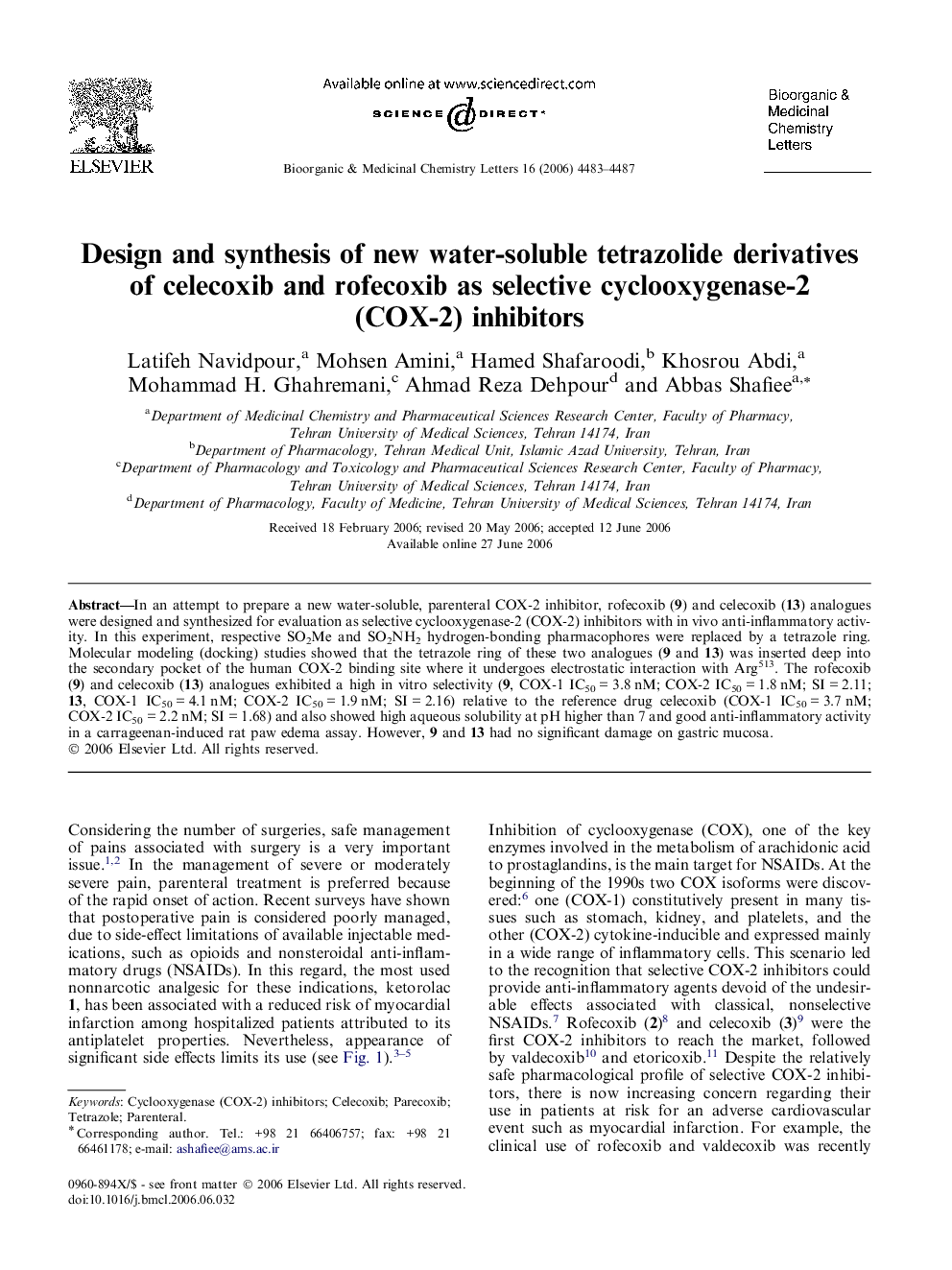| Article ID | Journal | Published Year | Pages | File Type |
|---|---|---|---|---|
| 1377699 | Bioorganic & Medicinal Chemistry Letters | 2006 | 5 Pages |
In an attempt to prepare a new water-soluble, parenteral COX-2 inhibitor, rofecoxib (9) and celecoxib (13) analogues were designed and synthesized for evaluation as selective cyclooxygenase-2 (COX-2) inhibitors with in vivo anti-inflammatory activity. In this experiment, respective SO2Me and SO2NH2 hydrogen-bonding pharmacophores were replaced by a tetrazole ring. Molecular modeling (docking) studies showed that the tetrazole ring of these two analogues (9 and 13) was inserted deep into the secondary pocket of the human COX-2 binding site where it undergoes electrostatic interaction with Arg513. The rofecoxib (9) and celecoxib (13) analogues exhibited a high in vitro selectivity (9, COX-1 IC50 = 3.8 nM; COX-2 IC50 = 1.8 nM; SI = 2.11; 13, COX-1 IC50 = 4.1 nM; COX-2 IC50 = 1.9 nM; SI = 2.16) relative to the reference drug celecoxib (COX-1 IC50 = 3.7 nM; COX-2 IC50 = 2.2 nM; SI = 1.68) and also showed high aqueous solubility at pH higher than 7 and good anti-inflammatory activity in a carrageenan-induced rat paw edema assay. However, 9 and 13 had no significant damage on gastric mucosa.
Graphical abstractDesign, synthesis, and evaluation of a new water-soluble, parenteral COX-2 inhibitor, rofecoxib (9) and celecoxib (13) analogues, in which the respective SO2Me and SO2NH2 hydrogen-bonding pharmacophores were replaced by a tetrazole ring, are described.Figure optionsDownload full-size imageDownload as PowerPoint slide
